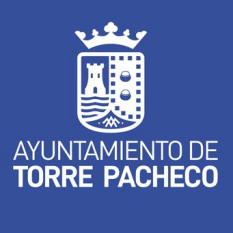Blog
»
{{catList[363].label}}
» Murcia in the Philippines?
Murcia in the Philippines?

Did you know that there is a Murcia in the Philippines? The Murcia of the Philippines is a first-class municipality located in the province of Negros Occidental, on the Island of Negros, located in the region of Western Visayas. Its population is 75,207.
At the end of the 19th century, the rule of the Spanish empire, which had begun some four hundred years earlier with the discovery of America, came to an end.
This is the case for Almeria, Pamplona, Tudela, Madrid, Barcelona, Valencia, Seville, Malaga, Murcia…and so on, with up to twenty names of Spanish cities in the Philippines.
The influence of Spanish on the language persists to the present day, for example, in bureaucratic or hierarchical words, such as alkalde (mayor), demokrasya (democracy), gobiyerno (government), hepe (chief), repúblika (republic), trabaho (work) and syudad (city). Also, in terms of religious words, kumpisal (confess), Yglesia (church), Bibliya (Bible), and even Dios (God), padre (father) and misa (mass) are written exactly the same.
Administrative division
The Murcia of the Philippines is administratively structured into 23 barangays, or towns, all of them rural, except for the so-called Zone III, which is considered urban.History of the region
The name of the region originates from the time of Spanish colonialism. The story goes that the Spaniards, upon arriving on the island, were amazed by the intense dark colour of the skin of its inhabitants, for which they called it the Island of Negros. The inhabitants of this island had not mixed their roots with Malays, Indonesians or Chinese, so there were no mestizos among its inhabitants.At the end of the 19th century, the rule of the Spanish empire, which had begun some four hundred years earlier with the discovery of America, came to an end.
In the 1800s, Spain lost the territories it had colonized before, not only the Americas but also Africa, the Caribbean and the Philippines.
From those more than three hundred years of Spanish rule in the Philippines, for example, some 2,000 words of the Spanish language have remained, as well as the Hispanic architecture present in many constructions such as churches, basilicas and cathedrals.
There are even many cities that bear names related to Spain.
From those more than three hundred years of Spanish rule in the Philippines, for example, some 2,000 words of the Spanish language have remained, as well as the Hispanic architecture present in many constructions such as churches, basilicas and cathedrals.
There are even many cities that bear names related to Spain.
Economy
The municipality of Murcia in the Philippines is primarily agricultural, with a greater emphasis on the sugar industry. There is also relevance in the tourist aspect. Another contribution to the economy comes from fishing, which is practiced across the island.Language
The main language of the region is Hiligueino, although Cebuano is also spoken in some towns. It is common for the very old inhabitants of the island to also speak Spanish, the language of the former colonizers.The influence of Spanish on the language persists to the present day, for example, in bureaucratic or hierarchical words, such as alkalde (mayor), demokrasya (democracy), gobiyerno (government), hepe (chief), repúblika (republic), trabaho (work) and syudad (city). Also, in terms of religious words, kumpisal (confess), Yglesia (church), Bibliya (Bible), and even Dios (God), padre (father) and misa (mass) are written exactly the same.
Climate
The atmosphere is warm. Temperatures range from 23 to 33 degrees Celsius and at the level of tropical rainfall, no major changes in climate are generated. This makes the Island of Negros a very attractive region in terms of tourism. The coldest days are in January and the warmest in May.Tourism
The Philippine islands receive millions of tourists, both domestic and foreign. Figures indicate that the number of visitors remains at a steady increase each year. On all the Philippine islands, there are a wide variety of hotels and other tourist places that visitors enjoy. Some of these resorts offer recreational facilities such as boats, swimming pools, fishing, playgrounds, massages and overnight cabins, among others.Activities in the region of Murcia
Share Article
More Articles










